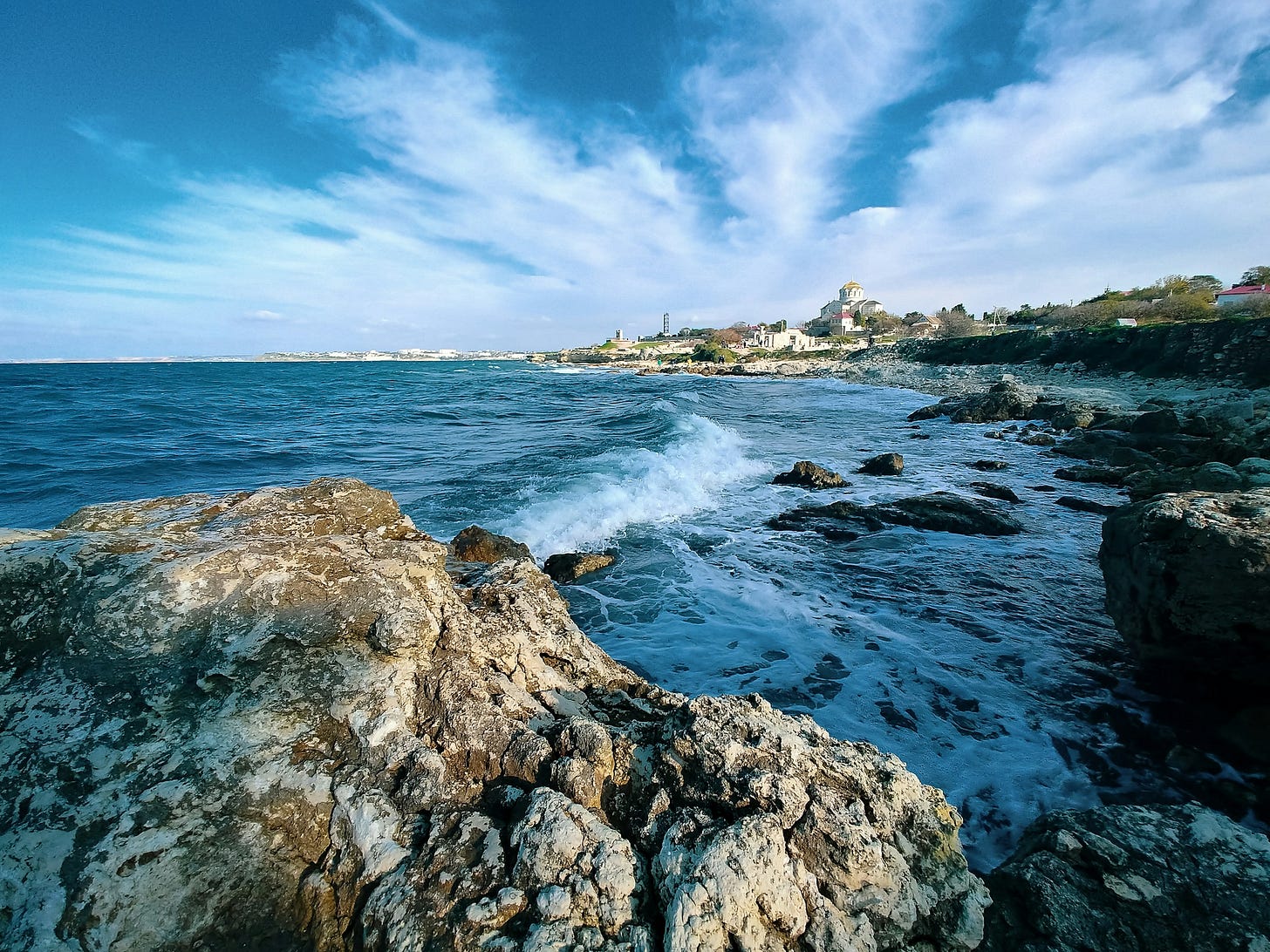
From the Kalka River to Lake Peipus: Russia Turns East
(Begin with ambient medieval Eastern European music, fading under narration)
After the Rus’ catastrophic defeat at the Kalka River in 1223, and especially following the full-scale Mongol conquest in the campaigns of the late 1230s, Mongol dominance reshaped the eastern and western reaches of the Russian world.
In the 13th century, Kyiv, now the capital of Ukraine, was still the spiritual and cultural heart of a region known as Kievan Rus. It wasn’t Russian in the modern sense. Its roots were Viking. The Norsemen who arrived in Eastern Europe, mostly of Swedish origin, were Varangians, also referred to as the Rus. They settled among the Slavic tribes, built river trade routes, and founded ruling dynasties. Over the generations, their Norse identity blended into the local Slavic world.
Kievan Rus was a loose federation of Slavic principalities spanning what we now know as Ukraine, Belarus, and the western edge of Russia. Rivers made its borders. Trade flowed south along the Dnieper to the Black Sea and north along the Volkhov and Northern Dvina toward the Baltic and the White Sea. The Dnieper linked Kyiv to Byzantium and the wider Mediterranean, while the collective waterways connected the forest to the steppe and bound distant peoples into a shared political and spiritual world.
(A quick note: If you’re listening to the audio-only version, the written piece available on Substack includes a detailed map. Kievan Rus stretched from the White Sea, above the Arctic Circle, to the Black Sea, just north of present-day Turkey.)
By this point, Kyiv’s political power had faded from its earlier role as the capital of Kievan Rus, but the city still carried immense symbolic weight.
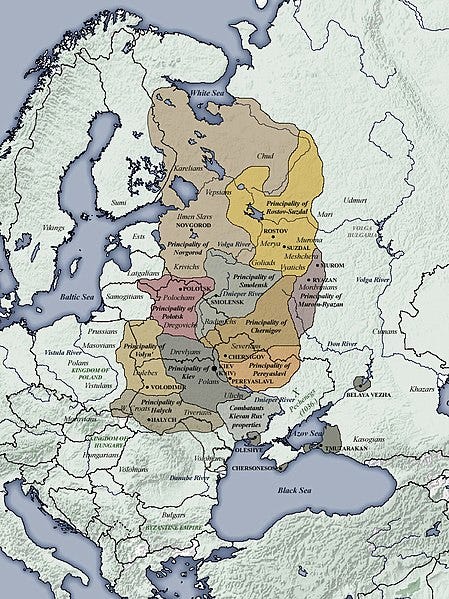
That changed in December 1240. Batu Khan, the grandson of Genghis Khan, led the Mongol army that laid siege to the city. After a brutal assault, they slaughtered its people and left the city in ruins. Many towns across Rus met the same fate. Some never fully recovered. Others vanished entirely.
In the years that followed, the world of Viking Rus, once shaped by Norse leadership and open trade, gave way to something new. In the northeast, Muscovy rose, its name the root of what we now call Moscow. The people were still Slavic, but operated under a different system. Under Mongol rule, governance became centralized, hierarchical, and dominated by Eastern thought.
Western thought emphasized law, feudal contracts, and the rights of lords and cities. Eastern philosophy favored absolute authority, obedience, and control. Power flowed from the top, not from mutual obligation. In the West, oaths bound lords and vassals. In the East, obedience flowed downward from an unquestioned ruler.
Russia turned its back on the Latin West and aligned itself with systems of power born from the East, imperial and unyielding.
That pivotal shift came into sharp focus with Alexander Nevsky’s decisive choice in 1242.
…
Alexander Nevsky, a prince of Novgorod, faced invasions from two directions. From the West, Catholic crusaders from the Teutonic Order pushed aggressively, determined to impose Western religious and political order. From the East, Mongol overlords watched closely, prepared to assert their brutal authority should Nevsky waver in his allegiance.
On April 5, 1242, on the frozen surface of Lake Peipus, Nevsky met the heavily armored Teutonic knights in a legendary clash known as the Battle of the Ice. His lightly equipped Russian troops were agile and intimately familiar with the terrain. They employed tactics blending patience, deception, and carefully calculated retreat. These tactics distinctly reflected Eastern strategic thinking, including principles of manipulation and timing.
The heavy crusader knights were ill-equipped for the battle. The ice cracked beneath their weight, plunging many into the freezing water. Nevsky’s victory became symbolic of Russia’s decisive choice to turn away from Western European dominance and instead accept the Eastern yoke of Mongol power.
Nevsky’s choice entrenched Russia in Eastern political philosophy, characterized by pragmatism, indirect manipulation, and power calculation.
So, the Battle of the Ice wasn’t so much a military victory as a decisive statement that Russia’s future would unfold under the Eastern logic of calculated statecraft. Russia would be shaped by the pragmatic wisdom echoed centuries earlier by Eastern philosopher Kautilya.
The Philosopher Kautilya
Long before the Mongols or the Rus, one philosopher wrote the handbook for survival in a ruthless world.
Kautilya, also known as Chanakya or Vishnugupta, was the chief adviser to Chandragupta Maurya, the founder of India’s Mauryan Empire in the fourth century BC.
Educated at the ancient university of Takshashila, he wrote the Arthashastra, a sweeping manual on statecraft, intelligence, and war. It describes how politics works, not how it ought to work.
Kautilya was a ruthless realist. Even the philosopher himself was born in legend.
Picture a dusty village in fourth-century BC India. A newborn boy arrives to a humble household. His father is Chanin. His mother is Chaneshvari. Both are followers of the Jain faith. Jainism is one of the world’s oldest religions. Jains believe in the existence of souls and strive to minimize harm to all living beings, including plants and animals.
In the newborn parent’s tiny courtyard, the village elders gather. They are curious for signs that foretell the child’s fate.
The baby startles everyone. He is born with a full set of teeth, a sign in local belief that marks a future king.
The boy’s father worries. Kings collect enemies, and enemies bring suffering. To blunt the omen, he breaks one of the infant’s teeth.
The monks study the infant again and shake their heads. The prophecy shifts. He will never sit on a throne; he will stand behind it, guiding its power.
Kautilya guided Chandragupta Maurya to dismantle the Nanda dynasty, unify the Indian subcontinent, and lay the foundation for the Mauryan Empire, one of the most powerful and administratively sophisticated empires of the ancient world. At its height, it controlled almost the entire Indian subcontinent, from the Himalayas in the north to the Deccan Plateau in the south, and from the Indus Valley in the west to the borders of present-day Bangladesh in the east.
The Mauryan Empire ruled about sixty million people, nearly a quarter of humanity at the time. No one matched that scale for more than a thousand years, until the rise of the Mongols.
When he wasn’t training an emperor or shaping a dynasty, Kautilya wrote. His words, etched in Sanskrit, became a manual for survival in a ruthless world.
In the Arthashastra, survival rests on four tools.
First, ‘Sama.’ Sama is persuasion, but not for the sake of harmony. Sama is influence without resistance. It is calm words, flattery, charm, even seduction, if the moment demands it. The aim is not agreement, it is control. Power exercised without force, where the opponent believes it was their own choice.
Next, ‘Dana.’ Dana is inducement. A reward, but not a gesture of goodwill. It is a calculated investment. Gold, land, favors, each given not for kindness, but for leverage. In the East, generosity is often strategy in disguise.
Third, ‘Bheda.’ Bheda is the use of logic or trickery to influence others. It plants suspicion, quietly unravelling unity from within. The most efficient way to defeat an enemy is to make them defeat themselves.
Last, ‘Danda.’ Danda means the open use of force. Not unleashed in anger, but in certainty. When all other tools have served their purpose, Danda completes what the others began.
Eastern thought is vast, but Kautilya’s four-tool schema offers its sharpest lesson in political realism. Kautilya serves as a diagnostic lens, not as evidence that medieval Russia consulted the Arthashastra; the parallels emerge from convergent strategic logic. That blueprint echoes through Sun Tzu, the Mongol khans, and the rulers of Muscovy.
Eastern philosophy does not ask a ruler to be noble; it asks the ruler to be effective. A wise leader puts self-interest first and moves between persuasion, reward, division, and force when the moment demands.
When Muscovy absorbed Mongol methods, it closely echoed Kautilya’s ideas, whether consciously or simply through historical resonance. Two centuries after Nevsky, on the banks of the Ugra River, a grand prince would embody these Eastern lessons.
Ivan III and the Great Stand on the Ugra
Picture Muscovy in 1480.
Two centuries have passed since Nevsky. The grand princes of Moscow now rule a realm knit together by tribute, surveillance, and a network of loyal boyars. Over those two centuries, Muscovy gathered taxes for the khan, slowly turning that machinery to its own ends.
Ivan III, Grand Prince of Moscow, born in 1440, hidden from murderers as a child, who started leading armies at the age of 12, has stopped sending silver to the steppe.
Akhmat Khan of the Great Horde leads his army west to punish Ivan’s defiance.
Summer turns to autumn. The two armies meet on opposite banks of the Ugra River, a quiet tributary of the Oka about one hundred fifty miles southwest of Moscow. It is a tense, prolonged standoff. Ivan blocks every ford, posts archers in the reeds, and waits. No arrows fly. No charges thunder. Day after day, the river lies between them like a mirror.
Ivan is not idle. He enters negotiations with the khan to delay. He uses persuasion and trickery to buy time.
Meanwhile, he sends envoys to Lithuania, urging them to stay neutral. He releases gifts to minor Tatar princes who resent Akhmat. He spreads whispers that Muscovy’s allies had already raided the Horde’s rear camp.
Persuasion, reward, and division work together silently while the army shows strength only in reserve.
Weeks pass. The Horde’s supplies run low. Winter fog settles over the water.
Hidden from Akhmat, Ivan’s allies struck, or seemed to strike, at the Horde’s base. Whether real or whispered, the threat broke the Khan’s nerve.
On a cold November night, Akhmat breaks camp and retreats to the steppe. Ivan’s host watches the torches fade, then marches home without a battle. Russians will remember it as the Great Stand on the Ugra River, the moment the Mongol yoke snapped without a sword stroke.
Ivan returns to Moscow and orders the double-headed eagle of Byzantium carved above the Kremlin gate. He claims the title Sovereign of All Rus, collects tribute for himself, and binds the boyars under a single, autocratic will.
The lesson is pure Kautilyan philosophy: persuade, reward if useful, divide when necessary, and strike only when certainty is absolute.
Ivan’s stand at the Ugra wasn’t a single moment in history. It became a blueprint. From Ivan, through the tsars and into the Soviet era, Russia’s leaders have consistently drawn from that Eastern playbook, refining persuasion, division, and deception into an art.
Today, we continue to miss the obvious.
Russia still plays from the Eastern playbook. They don’t play with obvious brute strength. The Eastern playbook necessitates Kautilyan precision.
Sama - to persuade us with lies, false narratives about NATO aggression (Putin’s 2007 Munich speech), historical grievances, red lines, and misunderstood borders. Their aim isn’t agreement. It’s control.
Dana - to induce us to enter into prolonged negotiations, knowing some in the West will see a path to glory in a quick diplomatic win. But this generosity is leverage in disguise. It results in delay.
Bheda - to divide us, whispering into the cracks between NATO allies (2016 Brexit disinformation), feeding fatigue, exploiting dissent, and making us question each other’s allegiance long before we question them.
Danda - to strike. Yes, with missiles raining down on Kyiv and Kharkiv, but also in quieter, equally destructive ways. Think of the Sandworm Team cyberattacks crippling Estonia and Ukraine’s power grids, or the carefully planted disinformation campaigns that fracture the West from within.
We, the democratic republics, NATO nations, the transatlantic West…still haven’t learned how to play the game. Many days, we don’t even remember our purpose.
And yes, sometimes we compromise our ideals, trading principles for short-term security or convenience. Iraq in 2003 showed the West can trade procedure for speed, too, and we paid the strategic price for that haste. But we still believe those ideals matter.
The war in Ukraine isn’t just about Ukraine. It’s not even just about NATO or security guarantees.
It’s about the deepest division between West and East. In the West, power answers to the people. Governance is a messy, slow contract built on consent. Liberal systems aim (imperfectly) to make power answer upward.
In the East, people answer to power. In Russia’s strategic culture, rooted in centuries of centralized rule, power tends to flow downward.
We reject Eastern philosophy because it relies on influence built on lies and division to control the people.
Instead, we believe the Almighty grants us all the inherent right to life, liberty, and self-determination. We believe that no government can endow individuals with those rights. That governance is for the people, not the oligarchs.
In the long arc of history, governance for the people promotes strong, resilient societies.
How long will we appease Russia, hoping for peace on their terms, while the war in Ukraine grinds on?
May God bless the United States of America.
Music from #Uppbeat (free for Creators!):
https://uppbeat.io/t/arnito/le-quarter-du-samedi-soir
License code: ITDHTFNPJJJMUH0X








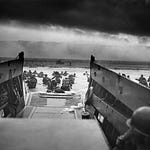

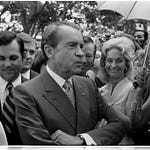
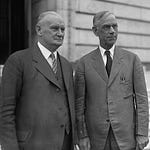

Share this post